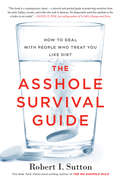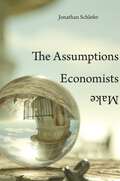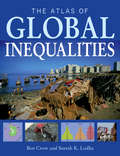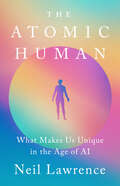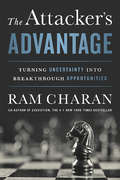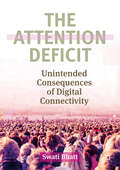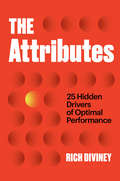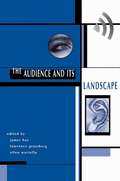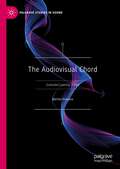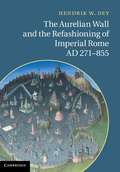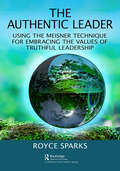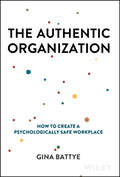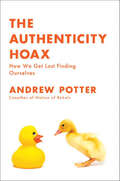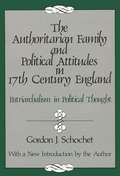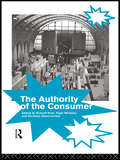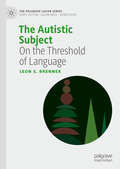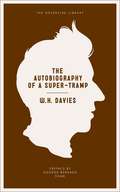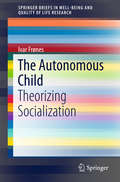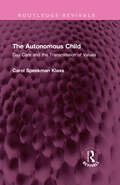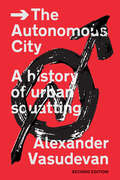- Table View
- List View
The Asshole Survival Guide: How to Deal with People Who Treat You Like Dirt
by Robert I. SuttonHow to avoid, outwit, and disarm assholes, from the author of the classic bestseller The No Asshole Rule “Help, I’m dealing with an asshole! What can I do?” Since his book The No Asshole Rule became a national bestseller a decade ago, Robert Sutton has heard that question asked in a thousand different ways. He answers the question in a new book that shifts focus from building civilized workplaces to providing relief for anybody who feels plagued and pushed around by assholes. Equally useful and entertaining, The Asshole Survival Guide delivers a cogent and methodical game plan. Sutton starts with diagnosis—what kind of asshole problem, exactly, are you dealing with? From there, he provides field-tested, evidence-based, and sometimes surprising strategies for dealing with assholes—avoiding them, outwitting them, disarming them, sending them packing, and developing protective psychological armor. Sutton even teaches readers how to look inward to stifle their own inner jackass. Ultimately, this survival guide is about developing an outlook and personal plan that will help you preserve the sanity in your work life, and will prevent all those perfectly good days from being ruined by some jerk.
The Assumption of Agency Theory
by Kate Forbes-PittThe Assumption of Agency Theory revisits the Turing Test and examines what Turing’s assessor knew. It asks important questions about how machines vis à vis humans have been characterized since Turing, and seeks to reverse the trend of looking closely at the machine by asking what humans know in interaction and how they know it. Building upon existing theories of philosophy of mind, this book shows not how humans operate theoretically, but how they use every day human skill to overcome knowledge barriers and understand each other through knowing themselves. Only once human interaction has been theorized in this way are machines able to be placed within it; when it is easier to understand what humans believe them to be. This book characterizes a non-human agent that shows itself in interaction but is distinct from human agency: an agent acting with us in our ongoing reproduction and transformation of structure. Turing predicted that at the end of the twentieth century, we would refer to thinking machines ‘without fear of contradiction’. The Assumption of Agency Theory shows how and why, even if we don’t say it, we deal with machines every day as if they are thinking, acting agents.
The Assumptions Economists Make
by Jonathan SchleferEconomists make confident assertions in op-ed columns and on cable newsâso why are their explanations often at odds with equally confident assertions from other economists? And why are all economic predictions so rarely borne out? Harnessing his frustration with these contradictions, Jonathan Schlefer set out to investigate how economists arrive at their opinions. While economists cloak their views in the aura of science, what they actually do is make assumptions about the world, use those assumptions to build imaginary economies (known as models), and from those models generate conclusions. Their models can be useful or dangerous, and it is surprisingly difficult to tell which is which. Schlefer arms us with an understanding of rival assumptions and models reaching back to Adam Smith and forward to cutting-edge theorists today. Although abstract, mathematical thinking characterizes economistsâ work, Schlefer reminds us that economists are unavoidably human. They fall prey to fads and enthusiasms and subscribe to ideologies that shape their assumptions, sometimes in problematic ways. Schlefer takes up current controversies such as income inequality and the financial crisis, for which he holds economists in large part accountable. Although theorists won international acclaim for creating models that demonstrated the inherent instability of markets, ostensibly practical economists ignored those accepted theories and instead relied on their blind faith in the invisible hand of unregulated enterprise. Schlefer explains how the politics of economics allowed them to do so. The Assumptions Economists Make renders the behavior of economists much more comprehensible, if not less irrational.
The Atlantic and Africa: The Second Slavery and Beyond (SUNY series, Fernand Braudel Center Studies in Historical Social Science)
by Paul E. Lovejoy Dale W. TomichThe Atlantic and Africa breaks new ground by exploring the connections between two bodies of scholarship that have developed separately from one another. On the one hand, the "second slavery" perspective that has reinterpreted the relation of Atlantic slavery and capitalism by emphasizing the extraordinary expansion of new frontiers of slave commodity production and their role in the economic, social, and political transformations of the nineteenth-century world-economy. On the other hand, Africanist scholarship that has established the importance of slavery and slave trading in Africa to the political, economic and social organization of African societies during the nineteenth century. Taken together, these two movements enable us to delineate the processes forming the capitalist world-economy, establish its specific geographical and historical structure, and reintegrates Africa into the transformations in the world economy. This volume explores this paradigm at diverse levels ranging from state formation and the reorganization of world markets to the creation of new social roles and identities.
The Atlas of Global Inequalities
by Suresh K. Lodha Ben CrowDrawing on research from around the world, this atlas gives shape and meaning to statistics, making it an indispensable resource for understanding global inequalities and an inspiration for social and political action. Inequality underlies many of the challenges facing the world today, and The Atlas of Global Inequalities considers the issue in all its dimensions. Organized in thematic parts, it maps not only the global distribution of income and wealth, but also inequalities in social and political rights and freedoms. It describes how inadequate health services, unsafe water, and barriers to education hinder people's ability to live their lives to the full; assesses poor transport, energy, and digital communication infrastructures and their effect on economic development; and highlights the dangers of unclean and unhealthy indoor and outdoor environments. Through world, regional, and country maps, and innovative and intriguing graphics, the authors unravel the complexity of inequality, revealing differences between countries as well as illustrating inequalities within them.Topics include: the discrimination suffered by children with a disability; the impact of inefficient and dangerous household fuels on the daily lives and long-term health of those who rely on them; the unequal opportunities available to women; and the reasons for families' descent into, and reemergence from, poverty.
The Atomic Human: What Makes Us Unique in the Age of AI
by Neil D. LawrenceFrom a renowned computer scientist, this book seeks the distinctive human quality that will prevail against artificial intelligence. If artificial intelligence takes over decision-making what, then, is unique and irreplaceable about human intelligence? The Atomic Human is a journey of discovery to the core of what it is to be human, in search of the qualities that cannot be replaced by the machine. Neil Lawrence brings a timely, fresh perspective to this new era, recounting his personal journey to understand the riddle of intelligence. By contrasting our own intelligence with the capabilities of machine intelligence through history, The Atomic Human reveals the technical origins, capabilities, and limitations of AI systems, and how they should be wielded–not just by the experts, but ordinary people.
The Attacker's Advantage: Turning Uncertainty into Breakthrough Opportunities
by Ram CharanThe phenomenon of uncertainty is not new; what is new is its intensity and potential to change industries and destroy companies. Business leaders can be on the defensive, or they can be on offense, prepared to lead decisively. The ability to deal with uncertainty is perhaps the paramount skill leaders must have to be successful in this era. Without it they risk becoming personally obsolete and driving their companies off a cliff. In The Attacker's Advantage, renowned business expert and bestselling author Ram Charan shows what skills are needed to be able to spot the disruption that is coming, and what actions are necessary to take advantage of these changes. While many leaders know how to cope with operational uncertainty--when, for example, revenue fluctuates--the same cannot be said for dealing with structural uncertainty that can alter the money-making patterns of a company, industry or entire economic sector. Charan demonstrates the huge upside offered by structural uncertainty and provides the concepts and tools--such as being able to spot the catalysts of disruption, building organizational preparedness, developing a financial understanding of the consequences--to take advantage of forces that are creating new customer needs, market segments and ways to make money. Uncertainty is now ubiquitous. The sources of structural change are so varied and fast moving, and their convergence so unpredictable. Digitization and the integration of technologies through software and hardware has already impacted many businesses, but much more is to come. With his unparalleled ability to cut through complexity and provide workable solutions, Ram Charan provides his readers with the ability to anticipate and deal with the biggest threats facing their business.
The Attention Deficit: Unintended Consequences of Digital Connectivity
by Swati BhattDigital technology has enabled connectivity on an unimagined scale. Human beings are social animals and economic activity promotes this socialization. Market transactions are based on optimism about the future, faith that the world is good and trust that growth is organic or coming from within the system. Individuals therefore invest in the future by having children, by extending credit and accepting risk, and by building connections with others in the sincere expectation of this connectivity being reciprocated. This book explores the unintended consequences of ubiquitous connectivity. The first effect is captured by the sharing model. Technology offers multiple avenues for sharing experiences and personal information, so active engagement with this increased content uses mental effort. Connection inevitably leads to comparisons with other groups and individuals, so despite the benefits of affirmation and group inclusion, these links corrode social networks, leading to depression and mental apathy. The second effect--the result of the commercialization of sharing--is encapsulated in the attention deficit model. Loss of self-worth, driven by the first effect, encourages further connectivity and sharing as buyers seek more comfort and reassurance via social media, paying with time and personal information. The product is digital content and the payment is with time and data. Correspondingly, social media fulfills this demand with exuberance, both via user-generated content and commercially curated content. We are overwhelmed with even more information, paying with increasingly scarce time and attention. Finally, the third and most consequential effect is diminished risk taking. Attention scarcity, as a consequence of the content tsunami, throttles cognitive effort, impairing judgment and decision-making. So the safe bet may be to do nothing . . . take no risks and no gambles. Weaving together the latest research on economics, psychology, and neuroscience, this book fills a void for readers wanting a smart, clear analysis of communications markets and the commercialization of Internet-inspired connectivity.
The Attributes: 25 Hidden Drivers of Optimal Performance
by Rich DivineyDo you have what it takes to succeed in any situation? According to a retired commander who ran training for Navy SEALs, true optimal performance goes beyond just skill. It&’s all about THE ATTRIBUTES.&“Diviney&’s incredible book explains why some people thrive—even when things get hard.&”—Charles Duhigg, New York Times bestselling author of The Power of HabitDuring his twenty years as a Navy officer and SEAL, Rich Diviney was intimately involved in a specialized SEAL selection process, which whittled a group of hundreds of extraordinary candidates down to a handful of the most elite performers. Diviney was often surprised by which candidates washed out and which succeeded. Some could have all the right skills and still fail, while others he might have initially dismissed would prove to be top performers. The seemingly objective criteria weren&’t telling him what he most needed to know: Who would succeed in one of the world&’s toughest military assignments?It is similarly hard to predict success in the real world. It happens often enough that underdog students accomplish exceptional achievements while highly skilled, motivated employees fail to meet expectations. Dark-horse companies pull away from the pack while dream teams flush with talent and capital go under. In working with and selecting top special operators for decades, Diviney saw that beneath obvious skills are hidden drivers of performance, surprising core attributes—including cunning, adaptability, courage, even narcissism—that determine how resilient or perseverant we are, how situationally aware and how conscientious. These attributes explain how we perform as individuals and as part of a team. The same methodology that Diviney used in the military can be applied by anyone in their personal and professional lives, and understanding these attributes can allow readers and their teams to perform optimally, at any time, in any situation.Diviney defines the core attributes in fresh and practical ways and shares stories from the military, business, sports, relationships, and even parenting to show how understanding your own attributes and those of the people around you can create optimal performance in all areas of your life.
The Audience and Its Landscape (Cultural Studies)
by James HayThis book offers a major reconceptualization of the term “audience,” including the landscape of a given audience—the situated and territorializing features of any way of seeing and defining the world. Given de Certeau's hypothesis that listening, watching, and reading all occur in places and result in produce transformed paths or spaces, the contributors to this landmark volume have provided innovative essays analyzing the transformations that take place in the geography between sender and receiver. The book acknowledges, in the face of conventional “discourse analysis,” the contextual features of discourse, to produce a complex and textured understanding of the concept of audience.The Audience and Its Landscape, presents the work of a vital cross-section of international scholars including Sweden's Karl Erik Rosengren, the UK's Jay G. Blumler and Roger Silverstone, Australia's Tony Bennett, Israel's Elihu Katz, Canada's Martin Allor, and the United States's Janice Radway, Byron Reeves, and John Fisk, to name a few. This book is truly groundbreaking in its depth and scope, and will speak to students of rhetoric, mass communication, cultural studies, anthropology, and sociology alike.
The Audiovisual Chord: Embodied Listening in Film (Palgrave Studies in Sound)
by Martine HuvenneThis book is a phenomenological approach to film sound and film as a whole, bringing all sensory impressions together within the body as a sense of movement. This includes embodied listening, felt sound and the audiovisual chord as a dynamic knot of visual and auditory movements. From this perspective, auditory spaces in film can be used as a pivot between an inner and an external world.
The Aurelian Wall and the Refashioning of Imperial Rome, AD 271–855
by Hendrik W. DeyThis book explores the relationship between the city of Rome and the Aurelian Wall during the six centuries following its construction in the 270s AD, a period when the city changed and contracted almost beyond recognition, as it evolved from imperial capital into the spiritual center of Western Christendom. The Wall became the single most prominent feature in the urban landscape, a dominating presence which came bodily to incarnate the political, legal, administrative and religious boundaries of urbs Roma, even as it reshaped both the physical contours of the city as a whole and the mental geographies of 'Rome' that prevailed at home and throughout the known world. With the passage of time, the circuit took on a life of its own as the embodiment of Rome's past greatness, a cultural and architectural legacy that dwarfed the quotidian realities of the post-imperial city as much as it shaped them.
The Austerity State
by Stephen Mcbride Bryan M. EvansThe fall-out from the economic and financial crisis of 2008 had profound implications for countries across the world, leading different states to determine the best approach to mitigating its effects. In The Austerity State, a group of established and emerging scholars tackles the question of why states continue to rely on policies that, on many levels, have failed. After 2008, austerity policies were implemented in various countries, a fact the contributors link to the persistence of neoliberalism and its accepted wisdoms about crisis management. In the immediate aftermath of the 2008 collapse, governments and central banks appeared to adopt a Keynesian approach to salvaging the global economy. This perception is mistaken, the authors argue. The “austerian” analysis of the crisis is ahistorical and shifts the blame from the under-regulated private sector to public, or sovereign, debt for which public authorities are responsible. The Austerity State provides a critical examination of the accepted discourse around austerity measures and explores the reasons behind its continued prevalence in the world.
The Authentic Leader: Using the Meisner Technique for Embracing the Values of Truthful Leadership
by Royce SparksUsing clear and simple exercises adapted for leadership development from the world-renowned Meisner Technique, The Authentic Leader will help you discover first-hand what it means to build your authentic leadership skills in a clear, technical way. This book presents a version of the Meisner technique that has been thoughtfully modified for the purposes of leadership training. It aims to train leaders to be fully authentic in their responses in the most efficient way and to let their responses be filtered by their abilities to deeply interpret and thrive within the psychological realities of the circumstances they are entering, be it their own or other people’s. The exercises in this book teach that effective leadership skills are about getting the attention off of oneself and allowing for a type of interpersonal determinism to bring out a leader’s truthful responses. This text breaks open the conversation on leadership and business skills in a whole new way - an established, although largely unknown method in the business world – that will help leaders engage in the values of great leadership and train their own abilities to have presence, be dynamic, be magnetic, and know how to read any situation and thrive within it. Whether you are green in your career or at the head of a nation, an aspiring leader or an educator looking to use this material, this work develops and nourishes powerful leadership in unconventional, effective, and dynamic ways. Royce Sparks is an internationally recognised teacher of the Meisner Technique. He has taughtit to both performers and members of the business world, having been one of the masterclasslecturers at University College London (UCL) on their MSc in Management. A graduate of theRoyal Central School of Speech and Drama, he has presented on Meisner and other approachesto performance at international conferences. His interest in performance techniques for businessand leadership development are a core element of his research. Individuals and companies withinthe arts he has collaborated with professionally include The Noh Theatre of Japan, Terence Stamp,Frantic Assembly, Nickolas Grace, Michael Attenborough, Complicite, Brigid Panet, and more.He received his Meisner training first under Scott Williams at the Impulse Company in Londonfor five modular years before furthering his knowledge and receiving his certification to teach theMeisner Technique from leading world expert Larry Silverberg, with whom he later collaborated.He regularly coaches and has taught in Canada, the United Kingdom, Europe, and the UnitedStates.
The Authentic Organization: How to Create a Psychologically Safe Workplace
by Gina Battye"The Authentic Organization is an empowering guide, offering an approachable framework for organizations to go beyond diversity and inclusion. It is an invaluable resource for any leader hoping to gain and maintain a competitive edge in today's talent market!" - Sergio Rodriguez, Senior Manager, Global Workforce DEI Solutions "The Authentic Organization deals with a hugely important topic – how to create Psychological Safety in the workplace. This book is insightful, practical, fun and easy to read!" -Andreas Richter, Professor of Organisational Behaviour, University of Cambridge “This is a timely book, written with heart. There is an increasing focus on Psychological Safety and Gina brings the concept to life, explaining how to make it a reality for everyone in our organisations.” -Simon Blake, Chief Executive Officer, Mental Health First Aid England Mastering Psychological Safety: Your definitive guide to cultivating a psychologically safe workplace In The Authentic Organization: How to Create a Psychologically Safe Workplace, CEO of the Psychological Safety Institute Gina Battye, delivers a hands-on manual to create work environments where people thrive. You’ll discover actionable strategies to establish a psychologically safe workplace; challenging and transforming workplace attitudes and outdated workplace cultures. Expect to experience a paradigm shift where psychological safety is at the core, enabling an inclusive culture and catalyzing organizational success. This book goes beyond the mechanics of creating a safe workplace, it also empowers individuals to unleash their authentic selves, not just surviving, but truly thriving, both professionally and personally. You’ll gain valuable insights and practical guidance to bring your authentic self to work, effectively navigate workplace interactions and create a highly conducive environment for teamwork and collaboration. Ultimately, you will have everything you need to drive cultural change and take an active role in creating a psychologically safe environment that empowers your team and transforms your entire organization. Gina masterfully navigates you through her distinctive approach, the world-renowned 5 Pillars of Psychological Safety framework, meticulously designed to cultivate an environment where your organization and people thrive. Within these pages you will encounter: A transformative process that empowers individuals to bring their Authentic Self to work, tapping into hidden capabilities to excel in their professional lives. A comprehensive communication framework that equips individuals to effortlessly master effective workplace interactions. A ground-breaking methodology that cultivates an environment where teams thrive and collaborate effectively in a calm and focused workplace setting. A must-read blueprint for anyone aiming to create psychologically safe work environments, The Authentic Organization is your comprehensive guide to cultivating a workplace where individuals and teams thrive. This book is the ultimate manual that leaders, managers, human resources professionals, Employee Resource Group leads, and business innovators have been waiting years for.
The Authenticity Hoax: How We Get Lost Finding Ourselves
by Andrew PotterExploring a number of trends in our popular culture, Andrew Potter argues that our pursuit of the authentic is fraught with irony and self-defeat.Thought provoking and revelatory, The Authenticity Hoax exposes how the search for the “true” and “real” is rooted in a society obsessed with individual elitists suckered into believing that their lifestyles are the only genuine ones in a fake world. Manipulated by the inescapable consumerism and sound bites of contemporary life, influenced ethically and politically, people embrace an artificiality borne of mass culture that alienates relationships and communities.In this no holds barred critique of modernism, Andrew Potter also shares how we stop worrying about being “authentic” and learn how to find peace and meaning with our current world, the people around us, and ourselves.“A totally real, genuine, authentic book about why you shouldn’t believe any of those words. And it’s genuinely good.” —New York Times bestselling author Gregg Easterbrook“It’s a fascinating approach to a fascinating subject, and Potter bolsters his argument with examples drawn from pop culture, history, and other sources. Written in a lively style that invites the reader to argue with the author, the book, at the very least, will turn the reader’s eye inward, and make us take a good, long look at the way we present ourselves to the world.” —Booklist“Potter’s lively cultural analysis combines an astute analysis of foundational antimodernist thought (in particular Rousseau) with savvy surveys of mass culture to flag the pitfalls and ironies of the modern obsession with authenticity in its every incarnation (authentically punk, spiritual, environmentally conscious) from our jeans to our celebrities.” —Publishers Weekly
The Authoritarian Family and Political Attitudes in 17th-century England
by Gordon J. SchochetIn earlier political thought, familial doctrines provided anthropological accounts of the origins of political order, whereas in the Stuart period, patriarchalism was primarily a justification of political obligation. Analyzing these essential differences, Professor Schochet offers a number of sociological, and virtual disappearance of patriarchal conceptions of obligations during the seventeenth century. Untangling the patriarchal theory, he shows that it comported well with the implicit ideology and everyday life of the masses and was fully consistent with the level of historical awareness of the early modern period.
The Authority Trap: Strategic Choices of International NGOs
by Sarah S. Stroup Wendy H. WongNot all international nongovernmental organizations (INGOs) are created equal, Some have emerged as "leading INGOs" that command deference from various powerful audiences and are well-positioned to influence the practices of states, corporations, and other INGOs. Yet Sarah S. Stroup and Wendy H. Wong make a strong case for the tenuous nature of this position: in order to retain their authority, INGOs such as Greenpeace, Oxfam, and Amnesty International refrain from expressing radical opinions that severely damage their long-term reputation. Stroup and Wong contend such INGOs must constantly adjust their behavior to maintain a delicate equilibrium that preserves their status.Activists, scholars, and students seeking to understand how international organizations garner and conserve power—and how this affects their ability to fulfill their stated missions—will find much of value in The Authority Trap. The authors use case studies that illuminate how INGOs are received by three main audiences: NGO peers, state policymakers, and corporations. In the end, the authors argue, the more authority an INGO has, the more constrained is its ability to affect the conduct of world politics.
The Authority of the Consumer
by Nicholas Abercrombie Russell Keat Nigel WhiteleyFirst published in 2004. Routledge is an imprint of Taylor & Francis, an informa company.
The Autistic Subject: On the Threshold of Language (The Palgrave Lacan Series)
by Leon S. BrennerThis book presents a theory of autistic subjectivity from a Lacanian psychoanalytic perspective. Dr. Brenner describes autism as a singular mode of being that is fundamentally linked to one’s identity and basic practices of existence, offering a rigorous alternative to treating autism as a mental or physical disorder. Drawing on Freud and Lacan’s psychoanalytic understanding of the subject, Brenner outlines the unique features of the autistic subjective structure and provides a comprehensive synthesis of contemporary work on the psychoanalysis of autism. The book examines research by theorists including Jean-Claude Maleval, Éric Laurent, Rosine and Robert Lefort that has been largely unavailable to Anglophone audiences until now. In this book autism is posited to be a singular subjective structure not reducible to neurosis or psychosis. In accordance with the Lacanian approach, autism is examined with detailed attention to the subject’s use of language, culminating in Brenner’s “autistic linguistic spectrum.” A compelling read for students and scholars of psychoanalysis and autism researchers and clinicians.
The Autobiography of a Super-Tramp
by W. H. DaviesAn untutored Welsh tramp who became a popular poet acclaimed by the conservative Georgians and the vanguard Ezra Pound alike, W. H. Davies surprised his contemporaries with the unlikeliest portrait of the artist as a young man ever written. After a delinquent childhood Davies renounced home and apprenticeship and at twenty-two sailed to America the first of more than a dozen Atlantic crossings, often made by cattle boat. From 1893 to 1899 he was schooled by the hard men of the road, disdaining regular work and subsisting by begging. Crossing Canada to join the Klondykeo gold rush, Davies fell while hopping a train. His foot was crushed and his leg amputated. All the wildness had been taken out of me,o Davies wrote, and my adventures after this were not of my own seeking. o Praised by Osbert Sitwell for his primitive splendour and directness,o Davies evokes the beauty and frontier violence of turn-of-the-century America in prose that George Bernard Shaw commended to literary experts for its style alone. o The insurgent wanderlust that found an American voice in Jack London and Jack Kerouac is expressed here in a raucous true adventure story by the man Shaw called the incorrigible Supertramp who wrote this amazing book. o
The Automaticity of Everyday Life: Advances in Social Cognition, Volume X (Advances in Social Cognition Series #Vol. 10)
by Robert S. WyerAs Skinner argued so pointedly, the more we know about the situational causes of psychological phenomena, the less need we have for postulating internal conscious mediating processes to explain those phenomena. Now, as the purview of social psychology is precisely to discover those situational causes of thinking, feeling, and acting in the real or implied presence of other people, it is hard to escape the forecast that as knowledge progresses regarding social psychological phenomena there will be less of a role played by free will or conscious choice in accounting for them. In other words, because of social psychology's natural focus on the situational determinants of thinking, feeling, and doing, it is inevitable that social psychological phenomena increasingly will be found to be automatic in nature. This 10th book in the series addresses automaticity and how it relates to social behavior. The lead article, written by John Bargh, argues that social psychology phenomena are essentially automatic in nature, as opposed to being mediated by conscious choice or reflection. Bargh maintains that an automatic mental phenomenon is that which occurs reflexively whenever certain triggering conditions are in place; when those conditions are present, the process runs off autonomously, independently of conscious guidance. In his lead article, he focuses on these preconscious automatic processes that can be contrasted with postconscious and goal-dependent forms of automaticity which depend on more than the mere presence of environmental objects or events. Because social psychology, like automaticity theory and research, is also largely concerned with phenomena that occur whenever certain situational features or factors are in place, social psychology phenomena are essentially automatic. Students and researchers in social and cognitive psychology will find this to be a provocative addition to the series.
The Autonomous Child
by Ivar FrønesThe social sciences offer a variety of theories on how children develop, and various theories and disciplines apply their own vocabularies and conceptualise different aspects of the processes of socialization. This book looks at the theorizing of socialization in sociology, anthropology, psychology, in the life course approach, and as the interplay of genetics and environmental factors. It analyses the dominant perspectives and viewpoints within each discipline and field, and shows how the various theories and disciplines apply their own vocabularies and conceptualise different aspects of the processes of socialization. It argues that socialization does not represent a fixed trajectory into a static social order, and that different disciplines meet the challenges of complex developmental processes and changing environments in different ways. Socialization is a fundamental concept in sociology, but sociology has only to a limited degree sought to produce a coherent understanding of the processes of socialization, which has to encompass the interplay of societal, psychological and genetic factors. This book draws the threads together and, by doing so, offers a general framework for our understanding of the socialization process. At the centre of this process is the child as a subject, in an interplay with the patterns and significant others of the micro environment as well as with the macro-conditions of the modern knowledge based economies.
The Autonomous Child: Day Care and the Transmission of Values (Routledge Revivals)
by Carol Speekman KlassOriginally published in 1986, this book’s focal point is a field study which asks whether the social childrearing context of daycare transmits to young children values different from those within America’s dominant value tradition of individualism. Daycare critics were concerned that this social childrearing within daycare would weaken the family and promote collectivist rather than individualistic values, and thereby threaten the social continuity of America’s values. Through participant observation four daycare teachers’ interactions as they emphasize children’s individual learning experiences and children’s social learning experiences are examined. By focusing on the actions and words of daycare teachers and their children in their daily activities over time, this field study provides a conceptual model for an initial understanding of the relationship of daycare to the continuity of America’s values.
The Autonomous City: A History of Urban Squatting
by Alexander VasudevanA radical history of squatting and the struggle for the right to remake the cityThe Autonomous City is the first popular history of squatting as practised in Europe and North America. Alex Vasudevan retraces the struggle for housing in Amsterdam, Berlin, Copenhagen, Detroit, Hamburg, London, Madrid, Milan, New York, and Vancouver. He looks at the organisation of alternative forms of housing—from Copenhagen’s Freetown Christiana to the squats of the Lower East Side—as well as the official response, including the recent criminalisation of squatting, the brutal eviction of squatters and their widespread vilification.Pictured as a way to reimagine and reclaim the city, squatting offers an alternative to housing insecurity, oppressive property speculation and the negative effects of urban regeneration. We must, more than ever, reanimate and remake the urban environment as a site of radical social transformation.
